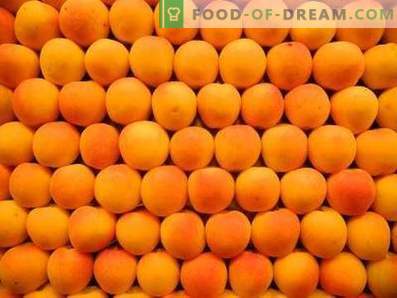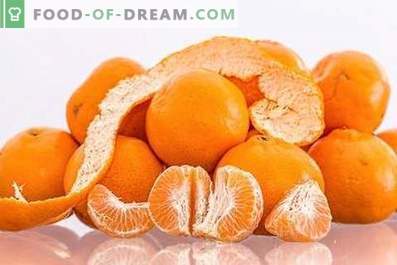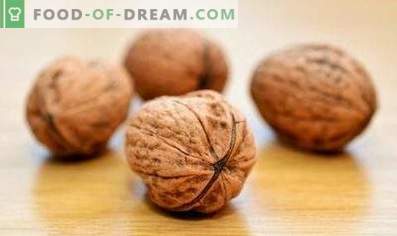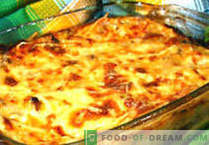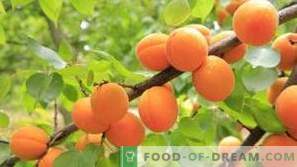
Apricot ordinary is a fruit plant of the genus of the Pink family plum. The fruits of the species are also called apricots and serve as a source of various dried fruits (primarily dried apricots and apricots). Still not able to reliably find out the historical homeland of apricot. One popular version says that the center of the fruit distribution was the Chinese region of Tien Shan. It was previously assumed that apricots were first cultivated in Armenia, since the fruits were brought to Asia and Europe from there. There is a suggestion (expressed in the 19th century) that after Armenia the apricot traveled with Alexander the Great to Greece, and then came to Italy. In the Roman and Greek documents, no confirmation of this version was found, but references to wood are found in Italian written sources of the first century. Perhaps the Armenian merchants introduced Rome to the fruits called by the Italians “Armenian apple”.
Descriptions of the fruit are found in the writings of Pliny and Ibn al-Faqih. The second author in the “Book of Countries” called the fruit “tsiranom” and “the fruit of Armenia”. However, unequivocal evidence of a particular version is difficult to find, since apricot was grown in all Asian regions and could be imported to Europe from many countries. The Russians became acquainted with the plant only in the 17th century, although in the Caucasus, the Crimea and the Ukraine they learned about the fruit directly through the Middle East. The fact that the fruits were brought to the Ukrainians by the Persians is confirmed by the similar name of the plant - Zerdel.
The Russian name for apricots was formed in the 18th century from the Dutch word abrikoos and the French abricot. The term Armeniaca in Latin was coined in 1700 by the French biologist de Tournefort. The creator of the species classification, Carl Linnaeus, designated this plant as Prunus foliis ovato-cordatis, but indicated in the description the name given by the predecessor from France. Apricot is sometimes referred to as “yellow dairy” or “morel”. Apricot tree loses leaves every year, and reaches a height of 6-9 meters. Old bark cracks along the trunk and takes on a brown or gray tint. Fresh shoots are usually brown or reddish in color and have many small lentils. Oval or round leaves with a length of 6 to 9 cm are arranged alternately and grow on thin grooved petioles. The top of the sheet is drawn in length, and its edges have one or two rows of teeth. Single flowers are planted on small stalks and grow to a radius of 12-15 mm. White or pinkish petals have the shape of an ellipse or egg, and within them is located from 20 to 45 stamens. Apricot flowers begin to bloom before the development of the leaves. Flowering plant occurs in early spring.
Sweet fruits are of the same type; in shape they resemble a small ball with a longitudinal groove, and in color they are orange-yellow or peach. The skin of the apricots is velvet and pubescent to the touch, and the bone is smooth and thick-walled. The wild fruits of apricot have a rough flesh and a bitter taste, and the cultivated varieties are sweet and juicy (they are also dryish). The first are mass from 3 to 20 g, and the second - to 80 g. Fruiting of the plant occurs in the summer months. In favorable conditions, trees live up to 100 years, but the most productive crop is observed in plants aged 3 to 40 years. Flower buds no longer form at temperatures below -17 ° C, although some apricot varieties withstand temperatures down to -25 ° C or even -30 ° C. The root system penetrates deep into the soil, so the tree withstands dry periods and grows well in hot regions .
Now wild apricot trees grow only in the Himalayas, in the Tien Shan and in the west of the North Caucasus mountains. The plant continues to be cultivated in areas with a warm temperate climate. In Russia, the cultivation of apricot is very popular in the Caucasus and in the southern regions of the western part of the country.
Nutritional value of apricots and vitamins in fruit composition
In the fruit is from 5 to 27% of various sugars, among which is dominated by sucrose. The fruit is rich in fiber and organic acids. In apricots you can find dextrin, inulin and starch.
Nutritional value 100 g apricots:
- 0, 92 g of proteins
- 0, 13 g of fat
- 9, 02 g of carbohydrates
- 2, 14 g of dietary fiber
- 1, 14 g of organic acids
- 86, 4 g of water
- 8, 2 g of monosaccharides and disaccharides
- 0, 74 g of starch
- 0, 72 g of ash
The bright color of the peel is due to the presence of beta-carotene, the concentration of which is particularly high in the southern varieties. Apricots are rich in all B vitamins, vitamins C, E and N.
Vitamins per 100 g of apricots:
- 1, 62 mg beta-carotene (vitamin A provitamin)
- 267, 2 μg of retinol equivalent (A)
- 10, 3 mg of ascorbic acid (C)
- 0, 032 mg of thiamine (B1)
- 0, 062 mg of riboflavin (B2)
- 0, 34 mg of pantothenic acid (B5)
- 0, 049 mg of pyridoxine (B6)
- 3, 2 mcg of folic acid (B9)
- 0, 71 mg of vitamin PP
- 0, 82 mg of niacin equivalent (PP)
- 1, 12 mg of tocopherol (E)
- 0, 32 μg of biotin (H)
Energy Value of Apricots
Fresh fruits are low-calorie and can safely be consumed in various diets. However, in dried apricots (dried apricots) there are five times more calories as it increases carbohydrate content.
- The caloric value of 100 g of apricot is 44 kcal.
- The caloric value of 1 fruit (30 g) is 13, 2 kcal.
- The caloric content of 100 g of dried apricots is approximately 232 kcal.
Apricots contain light carbohydrates, so they can quickly satisfy hunger. But the taste of apricot has a specific feature: you want to feel it again and eat more and more fruits. Therefore, despite the low calorie content, you should be careful when eating apricots.
Macro and trace elements in apricots
The fruit is considered to be the record for the content of potassium (300 mg per 100 g of fruit pulp), and in dried apricots its concentration even increases (1700 g per 100 g of dried fruit). The apricots contain phosphorus, iron and magnesium, which are required by the body to maintain health and are easily absorbed by it. The numerical indicators for the elements vary depending on the type of fruit, on the place of cultivation, on the degree of ripening and storage conditions. For example, in the Armenian varieties of apricot especially a lot of iodine.
Macroelements per 100 g of apricots:
- 28, 04 mg of calcium (Ca)
- 305, 4 mg of potassium (K)
- 8, 04 mg of magnesium (Mg)
- 26, 3 mg of phosphorus (P)
- 3, 25 mg of sodium (Na)
- 1, 213 mg of chlorine (Cl)
- 6, 02 mg of sulfur (S)
Trace elements per 100 g of apricots:
- 0, 72 mg of iron (Fe)
- 085 mg zinc (Zn)
- 1, 02 mcg of iodine (I)
- 140, 03 µg of copper (Cu)
- 0, 221 mg of manganese (Mn)
- 1, 14 μg of chromium (Cr)
- 11, 02 μg of fluorine (F)
- 8, 12 mcg of molybdenum (Mo)
- 125, 03 mcg of boron (B)
- 25, 04 mcg of vanadium (V)
- 5, 04 mg of silicon (Si)
- 2, 03 mcg of cobalt (Co)
- 364, 03 μg of aluminum (Al)
- 8, 01 μg of nickel (Ni)
Useful properties of apricots
- Fruits are very rich in sugars (up to 11%), contain inulin, tannins, organic acids, starch, vitamins of almost all groups, the most important mineral compounds. A huge amount of iodine prevents diseases of the thyroid gland with the systematic use of fruit. The presence of pectin, as well as lipotropic and anti-cholesterol effects of iodine contribute to the elimination of toxins and harmful metabolites from the body.
- Apricot components accelerate blood formation and increase hemoglobin level in blood. This increases the body's resistance and eases the effects of anemia. Also, the use of apricot pulp is important for avitaminosis, obesity, heart disease and kidney disease. The composition of the fruit has a positive effect on brain activity and memory, which makes the fruit an important part of the diet of knowledge workers, students and schoolchildren. Even sour wild apricots are very beneficial for the nervous system.
- Compote of apricots relaxes muscles and helps during constipation. Fruits actively relieve the body of heavy metals in the event of intoxication. Also, doctors are aware of the anti-cancer properties of apricot.
- In ancient times, they knew about the ability of thick decoctions and infusions of dried apricots to fight edema. This effective diuretic is often used to treat blood vessels and kidneys. Sometimes fruits include in the diet of patients with diabetes mellitus, however, too sweet varieties of Uzbekistan and Tajikistan will not work for this purpose (sugar concentration exceeds 75%).
- Dried apricots are a key component of the so-called. magnesium diets, which are prescribed for hypertension and alimentary forms of anemia.
- Apricot oil is used to dissolve injected subcutaneously and intramuscularly fat-soluble drugs.
- On the trunks of trees can be found incrustations (drops) translucent yellow frozen mass. They call it apricot gum and make it a component of blood-substituting liquids.
- Fruit juice is recommended for low acidity of the stomach, intestinal disorders. The bactericidal properties of the drink cope with putrefactive processes. Juice is rich in vitamins, and to meet the daily needs for them enough to drink 0, 5-1 glass.
- In Eastern medicine, cough aids are made from apricot kernels, which are prescribed for bronchitis, laryngitis, tracheitis, asthma.
Contraindications to the use of apricots
- Do not try the fruit on an empty stomach and eat after hard-to-digest foods, because the digestive process may be temporarily disrupted.
- It is dangerous to use the pulp and juice of apricot during exacerbation of gastritis and ulcers.
- With severe thyroid problems, the fruit will not relieve the condition, but, on the contrary, may worsen the situation.
- Eating more than 30 grams of apricot seeds per day can lead to poisoning.
- An excessive apricot craze can trigger diarrhea, which will lose important mineral elements. Also, an overdose of the fruit causes dizziness, lowering blood pressure, increased heart rate.

